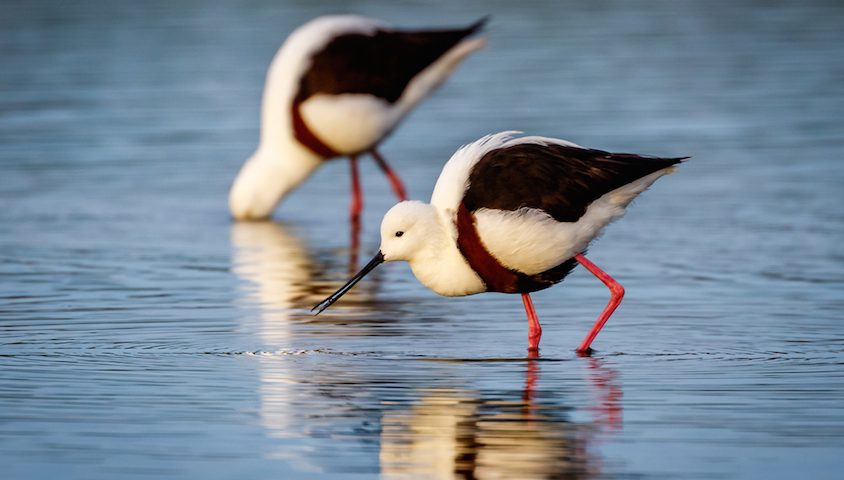Western Australia has experienced record summer rainfall across the western desert, causing usually dry salt pans to become more waterlogged than any time in the past 30 years.
As a result, visitors and custodians are remarking on the huge number of coastal bird species that have headed inland to breed.
The event has been documented by three member organisations of the Indigenous Desert Alliance (Kanyirninpa Jukurrpa, Central Desert Native Service, Central Land Council) and the Department of Parks and Wildlife (DPaW), who undertook a survey of banded stilts (Cladorhynchus leucocephalus) breeding in the inland lakes.
‘When we looked at the rainfall records and some satellite imagery, we knew this was a rare event’ said Gareth Catt, Kanyirninpa Jukurrpa Healthy Country Coordinator and spokesman for the Indigenous Desert Alliance.
‘These desert landscapes are some of the largest intact natural areas left on the planet and so little is known about them. We wanted to gather as much information as possible to understand what is occurring in these remote lakes,” he said.
Conservation officer for DPaW, Alicia Whittington explained the phenomenon was “a unique opportunity to gather as much information as possible to understand the importance of these remote lakes”.
“Waterbirds that normally reside on the coast are known to head inland to breed on desert island lakes formed during above average summer rains. This year has been exceptional and a rare chance to record the bird breeding in the desert.”
Surveying was undertaken from the air, with DPaW providing a light plane to cover the vast region of wetlands, flooded rivers and lakes.
According to Catt, “the water was so vast that we felt like we were flying over the ocean. We have long thought that these lakes are significant breeding grounds for several birds, but they exceeded our expectations”.
Among the various species of bird recorded in the inundated desert, perhaps the most exciting was the large colonies of banded stilts discovered on many small islands.
Close to 90,000 banded stilts, which are endemic to Australia, were recorded in just one lake, representing the largest numbers of the birds in any one place during the survey.
The research demonstrates the potential importance of these rare flooding occurrences for these and related species throughout the region.


